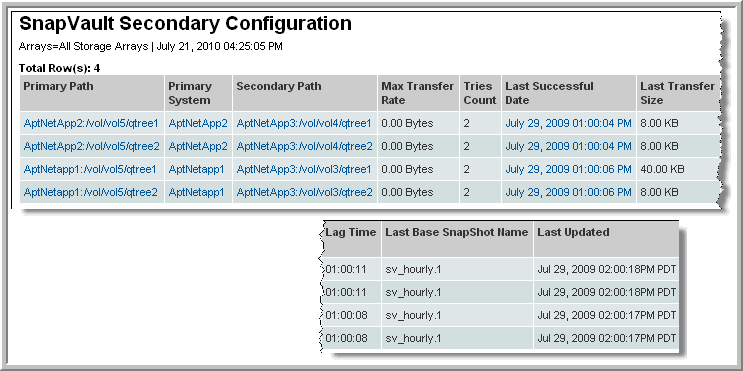

Primary Path | This path is used for the source of the baseline transfer. |
Primary System | The primary system of the SnapVault relationship and also the baseline transfer. |
Secondary Path | This path is the destination of the baseline transfer and as such, is created during the baseline transfer |
Max Transfer Rate | Maximum transfer rate; KB treated as 1024 bytes |
Tries Count | Indicates the maximum number of times this transfer will be attempted, as set in the SnapVault configuration. If a transfer isn’t successful after this number of tries, the secondary will not try again and all the data that was transferred on previous attempts will be removed. |
Last Successful Date | Timestamp of the last successful transfer. |
Last Transfer Size | Amount of data in the last SnapVault transfer. |
Lag Time | The amount of time from the start of the most recent successful transfer. |
Last Base SnapShot Name | The name of the last SnapShot for this primary system. |
Last Updated | The last time the Data Collector updated the Portal database. |